invited plenary talks
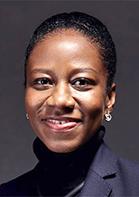
Ekhosuehi Iyahen
Mobilizing Insurance Sector Capabilities for Resilience
Monday July 1st, 09:45 – 10:00
In an era where disasters are becoming increasingly frequent and severe, the importance of resilience cannot be overstated. Earthquakes, with their sudden and devastating impact, remind us of our vulnerability. Yet, they also compel us to innovate, collaborate, and strengthen our preparedness and response mechanisms.
The insurance sector holds a unique position within the broader financial ecosystem. Beyond its traditional role of financial indemnity, the sector has the potential to drive resilience and recovery in unprecedented ways.
By mobilizing its resources, expertise, and reach, the insurance industry can play a key role in transforming the landscape of earthquake resilience and this is an issue that is central to the work and mandate of the Insurance Development Forum.
Ekhosuehi Iyahen is the Secretary General of the Insurance Development Forum (IDF), a Public-Private Partnership led by the insurance industry and supported by the World Bank and the United Nations and other international organisations, aiming to enhance the use of insurance to build greater resilience against disasters and to help achieve the United Nations Sustainable Development Goals and Global 2030 Agenda.
Ekhosuehi has extensive experience working with Governments, international development agencies, private sector entities and academic institutions on public financial management and strengthening risk management and financing systems and the role of insurance.
She has been directly involved in establishing and operationalising a number of pioneering initiatives including regional risk pools in Africa, the Caribbean and the structuring of a novel tripartite agreement between the IDF, the United Nations Development Programme (UNDP)and the German Ministry of Economic Cooperation and Development (BMZ) to increase insurance protection in 20 climate-exposed countries.
At COP26 in Glasgow she steered the launch of IDF’s hallmark Risk & Resilience Analytics programme focused on building risk analytics capability where it is needed the most. Thisincluded the launch of a formal partnership between the IDF and the V20 Group of Ministersof Finance from 58 Climate Vulnerable Countries on the establishment of the Global Risk Modelling Alliance and the joint establishment of the Global Resilience Index Initiative (GRII).
Ekhosuehi is a graduate of the London School of Economics and Political Science (LSE), Harvard University, John F. Kennedy School of Government and the University of the West Indies. In 2018 she was selected as Rockefeller Foundation Bellagio Centre Resident Practitioner Fellow and in 2020 was identified by Leader’s magazine as one of 100 global resilience thought leaders. She served as a Non-Resident Senior Fellow of the Atlantic Council’s Adrienne Arsht-Rockefeller Foundation Resilience Center between 2021 – 2023. She is also a serving member of the Climate Impacts Advisory Committee of the Wellcome Trust, one of the largest global charitable foundations.
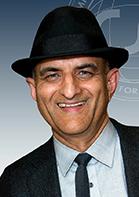
Ashraf Habibullah
Engineering is About People! An Introduction to Human Engineering
Wednesday July 3rd, 17:00 – 18:00
According to research published by the Carnegie Foundation, only 15% of your financial success is due to your technical expertise. The other 85% is due to your skills in human engineering, i.e. your interpersonal skills. Since strategic use of economic power translates into influence and recognition, nearly all students—but especially those in the technical fields—would benefit from an education that includes coursework in human engineering.
Could the absence of human engineering coursework from engineering degree programs be the reason why our professional fees do not even begin to reflect the profession’s immeasurable contributions to humanity? And why our profession is not even in the running for any high-profile recognition or prize, such as a Nobel?
In this talk Ashraf emphasizes the need for a human engineering-based education. He convincingly demonstrates, with enthusiasm and humor, why engineering students should cultivate within themselves a deep sense of personal confidence and passion, and why all students should develop public speaking skills and a mastery of both human chemistry and human psychology, so that they may enter the professional world ready to lead, influence, and inspire.
Ashraf Habibullah (https://en.wikipedia.org/wiki/Ashraf_Habibullah), Structural Engineer, is President and CEO of Computers and Structures, Inc. Ashraf graduated from the University of California at Berkeley in 1970 with a master’s degree in structural engineering. He founded CSI in 1975 and has led the development of CSI’s products, including SAP2000 and ETABS, for nearly five decades.
Today, CSI is recognized globally as the pioneer in the development of software for structural and earthquake engineering. CSI’s software is used by thousands of engineering firms and is the choice of sophisticated design professionals in over 160 countries.
Ashraf also has a keen passion for the arts and social causes. He is co-founder of the critically acclaimed Diablo Ballet and the founder of the Engineer’s Alliance for the Arts, an organization that involves school children with technology, focusing on the artistic aspects of bridge engineering.
Ashraf regularly donates his time and resources as a speaker to support humanitarian organizations, hospitals, and educational institutions worldwide. Ashraf has donated software to thousands of universities to ensure that the technology necessary to produce seismically-sound structures reaches everyone.
Ashraf has a deep personal interest in the study of human psychology and human behavior and how they can be leveraged to help people from all walks of life reach their maximum potential
Keynote Lectures

Julian J. Bommer
Seismic Hazard Assessment for Natural and Induced Earthquakes: Mmin, Mmax, and Everything in Between
Monday July 1st, 12:00 – 13:00
Probabilistic seismic hazard estimates are driven by the recurrence rates of earthquakes of different magnitudes in the seismic sources surrounding the site of interest. The number and the size of the earthquake scenarios that contribute to the hazard estimates are controlled by the integration limits Mmin and Mmax. There is a common belief that these two parameters exert a relatively minor influence on PSHA results, although for Mmax this is, in part, the result of tending to assign only very large values to logic-tree branches. While the view that seismic hazard estimates are not strongly dependent on Mmin and Mmax may often be valid when dealing with natural earthquakes, it does not hold for induced seismic hazard, for which the choice of Mmin and Mmax can be of critical importance. The lecture challenges some misconceptions regarding both the minimum and the maximum magnitude to be considered in seismic hazard analysis. The lecture also discusses the consequences of these misconceptions when PSHA is adapted to induced seismicity. These consequences highlight an urgent need to reevaluate how Mmin and Mmax are estimated because several energy technologies face unnecessary closure due to induced seismicity, which is often a direct result of the postulated values for these magnitude limits.
Dr. Julian J. Bommer is a chartered civil engineer and Fellow of the Royal Academy of Engineering. He holds the position of Senior Research Investigator in the Department of Civil & Environmental Engineering at Imperial College London, where he was formerly Professor of Earthquake Risk Assessment. He has more than 150 papers listed on Web of Science related earthquake ground motions, seismic hazard analysis and earthquake risk assessments, with over 14,000 citations and an h-index of 64. He has conducted field investigations of damaging earthquakes in Algeria, Armenia, California, Colombia, El Salvador, Greece, Italy, Japan, Mozambique, Peru, and Turkey.
Dr. Bommer has been engaged as a consultant in many seismic hazard and risk assessment projects around the world, including serving as a member of the Seismic Advisory Board for the Panama Canal expansion. He has led site-specific seismic hazard studies for nuclear sites in Brazil, South Africa, Spain, and the US, and served as a reviewer for similar projects in Abu Dhabi and Romania, as well as serving for a decade as the technical lead for the Expert Panel on Seismic Hazard of the UK Office for Nuclear Regulation. He has also worked on hazard and risk assessments related to induced seismicity, including geothermal projects in Basel and El Salvador, conventional and unconventional hydrocarbon production in Canada and Colombia, gas production in the Netherlands, gas storage in Spain, and carbon capture and storage in Australia.
His contribution to research and practice have been recognised through the invitation from SECED to deliver the Seventeenth Mallet-Milne lecture and from SSA and EERI to deliver the Seventeenth Joyner Memorial Lecture. He has also been a recipient of the Earthquake Spectra Outstanding Paper award on two occasions.
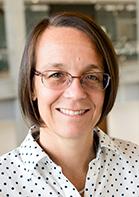
Ellen M. Rathje
Regional-Scale Seismic Landslide Assessments for Distributed Infrastructure Systems
Tuesday July 2nd, 12:00 – 13:00
Earthquake-induced landslides represent a significant seismic hazard and a regional-scale assessment is required to fully understand the potential impacts of landslides on distributed infrastructure systems such as pipelines and transportation networks. This presentation describes recent advances in regional-scale landslide assessments that address important issues associated with data-driven characterization at the regional scale, uncertainty and variability, and quantifying the expected landslides in terms of displacement, size, and direction of movement. These developments are derived within the context of seismic pipeline risk assessments for the State of California using a 10-m digital elevation model, state-wide geotechnical borehole database, state-wide geologic map, and regional groundwater well data, and uncertainties are incorporated via a logic tree approach. Ultimately, the analyses define landslide zone polygons, each of which is characterized by a statistical distribution of the potential landslide size, displacement, and direction given an earthquake scenario. The presentation will also highlight the importance of understanding the fragility curves used to assess damage to the distributed infrastructure systems such that the landslide analysis provides the required information to assess seismic risk.
Dr. Ellen M. Rathje is the Janet S. Cockrell Centennial Chair in the Department of Civil, Architectural, and Environmental Engineering and a Senior Research Scientist at the Bureau of Economic Geology (BEG) at the University of Texas at Austin, USA. Her research interests include seismic site response analysis, seismic slope stability, earthquake-induced ground failure, and remote sensing. She has published over 100 papers on these topics and has supervised the research of over 30 graduate students. Her research has been funded by the the U.S. National Science Foundation, U.S. Geological Survey, the U.S. Nuclear Regulatory Commission, the State of Texas, and the United Nations Development Program.
Dr. Rathje is the Principal Investigator for the development of the DesignSafe cyberinfrastructure for the NSF-funded Natural Hazards Engineering Research Infrastructure (NHERI). She is part of the Leadership Team for the TexNet Seismic Monitoring Program, housed at the Bureau of Economic Geology of UT. She also is a founding member and previous Co-Chair of the Geotechnical Extreme Events Reconnaissance (GEER) Association, the pre-eminent organization in the world coordinating geotechnical investigations after extreme events, such as earthquakes and floods.
Much of her consulting work is associated with site response and seismic hazard studies for nuclear facilities around the globe, including the Thyspunt Nuclear Site in South Africa, four existing nuclear power plants in Taiwan operated by Taipower, and multiple nuclear facilities at the Idaho National Laboratory.
She is currently a member of the Board of Directors of the International Association for Earthquake Engineering (IAEE) and also a member of the NSF Advisory Committee for Cyberinfrastructure (ACCI). She has previously served on the Committee on Geological and Geotechnical Engineering (COGGE) for The National Academies of Sciences, Engineering, and Medicine, the Board of Directors for the Earthquake Engineering Research Institute (EERI), and the USGS Scientific Earthquake Studies Advisory Committee.
Dr. Rathje has been honored with various research awards, including the 2022 Peck Award and Lecture from the Geo-Institute of the American Society of Civil Engineers (ASCE), the 2018 William B. Joyner Lecture Award from the Seismological Society of America and EERI, the Huber Research Prize from ASCE in 2010, the Hogentogler Award for outstanding paper from ASTM Committee D18 in 2010, the Shamsher Prakash Research Award in 2007, the Shah Innovation Prize from EERI in 2006, and the Casagrande Award from ASCE in 2002. She was elected Fellow of the American Society of Civil Engineers in 2016.
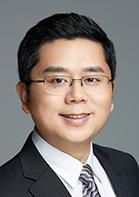
Xinzheng Lu
From “Simulation-driven” Urban Disaster Mitigation to “Generative AI-powered” Seismic Design
Wednesday July 3rd, 12:00 – 13:00
“Resilience” has emerged as a prominent focal point for building and urban disaster prevention. Consequently, thoroughly examining the mechanisms underlying urban disasters such as earthquakes and the evolution of resilience from both building and city scales is of utmost importance. Traditional methods are mainly limited to historical disaster data-driven empirical models. In contrast, this presentation emphasizes the physics-based earthquake simulation by introducing the nonlinear time history analysis method at both building and city scales. Moreover, the presentation will highlight a physics-based multi-hazard simulation framework. The framework, rooted in the city information model (CIM), is designed to evaluate building and community resilience in the face of multiple hazards, including earthquakes, fires, windstorms, and even the COVID-19 pandemic. The employed physics-based models have the advantage of being independent of historical disaster data, enabling their application across various regions. Furthermore, using the CIM-powered database standardizes the required data format for simulations across different hazard types and scales, thereby enhancing simulation efficiency.
Furthermore, the potential of generative artificial intelligence (AI) in structural designs with integrated seismic design knowledge is explored. Generative AI technologies such as generative adversarial networks (GANs), graph neural networks (GNNs), and diffusion models exhibit outstanding capabilities in learning high-dimensional data features and absorbing domain knowledge from the seismic design field. The technology facilitates the intelligent design of component layouts and sectional dimensions for both vertical and horizontal structural elements, taking into account seismic design criteria. It also enables intelligent prediction of material usage and seismic responses for building structures. A generative AI design software for building structures has been developed and implemented in engineering practice. Application studies indicate that the structural designs generated by AI are on par with those created by human experts, fulfilling the seismic design requirements for building structures while significantly enhancing design efficiency.
Xinzheng Lu is a full professor and the Head of the Institute of Disaster Prevention and Mitigation Engineering at Tsinghua University, Beijing, China. He is also the Editor-in-Chief of the Engineering Mechanics journal of CSTAM, the Associate Editor of the Journal of Structural Engineering-ASCE and Journal of Computing in Civil Engineering-ASCE, and Editorial Board of Earthquake Engineering & Structural Dynamics, Journal of Earthquake Engineering, etc.
Prof. Lu’s major research interests cover disaster prevention and mitigation, and intelligent structural design. He has published over 200 academic papers and 8 monographs, which have been cited more than 17000 times in Google Scholar. He has been continuously listed as the “Most Cited Chinese Scholars in Civil and Structural Field” by Elsevier (from 2014 to 2023). The models and methods he proposed have been adopted by ACI guidelines, and Chinese national and industrial design codes, and integrated into multiple important simulation platforms, such as OpenSees, US-NSF NHERI SimCenter, and China Earthquake Networks Center. He has participated in the design of many landmark buildings and the planning of important city areas, such as the tallest building in Beijing (CITIC Tower, 528 m). The generative AI structural design system (ai-structure.com) developed by Prof. Lu has already been used in over 1000 engineering designs. He also participated in the emergency earthquake reconnaissance of Wenchuan (2008), Yushu (2010), Lushan (2013), Ludian (2014), etc. He has received the Second-Class National Natural Science Award of China (second contributor), First-Class Natural Science Award of the Ministry of Education of China (first contributor), First-Class Science and Technology Progress Award of Beijing (first contributor), “Changjiang Scholar Award Program” Distinguished Professor (2018), the XPLORER PRIZE of the Tencent Foundation, Gold Medal with congratulations of the jury of International Exhibition of Inventions Geneva (first contributor), and JM Ko Award, etc.

Judith Mitrani-Reiser
Taking Measure: How Earthquake Reconnaissance Has Evolved Over Fifty Years
Thursday July 4th, 12:00 – 13:00
Extreme events, such as earthquakes and fires, test buildings and infrastructure in ways and on a scale that cannot be easily replicated in a laboratory. Therefore, actual disasters and failure events provide important opportunities for scientists and engineers at the National Institute of Standards and Technology (NIST) and elsewhere to study these events, and improve the safety of buildings, their occupants, and emergency responders. The keynote lecture will provide an overview of the disaster research conducted at NIST and informed by strategic plans developed by national disaster statutory programs: Disaster and Failure Studies (DFS) Program, National Earthquake Hazard Reduction Program (NEHRP), and National Windstorm Impact Reduction Program (NWIRP). The lecture will highlight how the metrology of disasters has evolved since the Learning from Earthquakes (LFE) Program was established fifty years ago by the National Science Foundation, a NEHRP agency. The lecture will also provide an overview of how the advancement of tools (e.g., interview/survey instruments, GIS, data management, etc.) and technology (e.g., lidar, GPS, drones, etc.) in seismic reconnaissance missions has enabled scientists and engineers to better quantify the physical and social impacts of earthquakes on communities. The lecture will commemorate the multidisciplinary approach to learning from disasters, directly borne out of the LFE Program.
Dr. Judith Mitrani-Reiser is a Senior Research Scientist at the National Institute of Standards and Technology (NIST) and has dedicated her career to reduction of losses from disasters and failures in our built environment. Judy previously served as the Associate Chief of the Materials and Structural Systems Division and the Director of the Disaster & Failure Studies Program of the Engineering Laboratory at NIST. Before switching to a career in public service, she served on the faculty of the Departments of Civil Engineering and of Emergency Medicine at Johns Hopkins University. She has led research projects and transdisciplinary teams in multi-hazard impacts, community resilience, evacuation modeling, and performance of healthcare facilities.
Judy currently leads NIST’s National Construction Safety Team (NCST) investigation of the partial collapse of Champlain Towers South in Surfside, Florida. She also leads the mortality project of the NCST investigation of Hurricane Maria’s impacts on Puerto Rico. At NIST, she provides leadership for national hazards reduction programs, including the National Earthquake Hazards Reduction Program (NEHRP), and the National Windstorm Impact Reduction Program (NWIRP).
Judy received her Ph.D. in Applied Mechanics from the California Institute of Technology (Caltech) in 2007, M.S. in Structural Engineering, Mechanics, and Materials from the University of California, Berkeley in 2001, and B.S. in Civil and Coastal Engineering from the University of Florida in 2000.
Judy was inducted into the Academy of Distinguished Alumni at the University of California, Berkeley in 2021, and has received several NIST awards for her mentorship, dedication to a safe working environment, and her advocacy for diversity, equity, and inclusion in the workplace. She served as the Vice President of EERI in 2021 and its Board of Directors from 2018 to 2021.
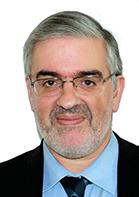
Dimitrios Vamvatsikos
Criteria for Selecting Intensity Measures in Seismic Risk Assessment: What Matters, What Does Not, and Why
Friday July 5th, 12:00 – 13:00
There is one universal truth that pervades human existence: When it comes to cooking, grandma knows best. It does not matter if you come from Italy, Greece, Mexico, East Texas, or Japan. Your nonna, giagia, abuella, meemaw, or obaasan always has and always will know best. When even michelin star chefs cannot disagree with this, why not bring such expertise into earthquake engineering and especially to the thorny issue of selecting intensity measures for seismic fragility, vulnerability, and risk assessment? Take italian cooking, for example, where the importance of La Nonna picking the supreme tomatoes for pizza margherita, pasta arrabiata, or simply an insalata caprese, cannot be understated. Why settle for lesser standards when facing the (arguably) equally critical decision of selecting an intensity measure for assessing single structures, infrastructure networks, asset portfolios, or nuclear power plants, aiming to capture damage and loss in structural and non-structural components alike? One can opt for criteria like proficiency, correlation, or even the venerable sufficiency. But Nonna knows that it is not about the size, the shape, or the luster of a tomato. It is only about the taste. Let us confront this mallardic issue to realize what grandma knew all along: Selecting an efficient (low-variability, high-taste) intensity measure with good seismological support is the way to go.
Dimitrios was born in Nea Ionia Volou, Greece in 1974. Having an intense interest in math and physics he enrolled in NTU Athens and graduated with a Diploma in Civil Engineering (1997) and a desire to broaden his horizons. He then moved to California and Stanford University where he studied geomechanics (MSc 1998), probabilistic methods, hazard estimation and seismic performance of structures (PhD 2002). After graduating he participated in various research projects in Greece ranging from modal identification and Bayesian model updating for bridges to modeling older reinforced concrete buildings. On September 2005 he was appointed at the University of Cyprus as a Lecturer teaching design of steel structures and earthquake engineering. Since January 2011 he has joined the faculty of the Metal Structures Laboratory at the National Technical University of Athens specializing in the static and dynamic analysis of steel structures.
His research vision is focused on integrating structural modeling, computational techniques, probabilistic concepts and experimental results into a coherent framework for the performance evaluation of structures. Specifically, he is highly interested in the estimation of seismic hazard, the modeling, analysis and design of steel and monumental structures, the nonlinear static and dynamic analysis of structures, the seismic performance of buildings and bridges and the associated influence of uncertainties. The underlying ambition is to integrate elements of such procedures into future codes and design practices.
CSI/IAEE Masters Series Lectures
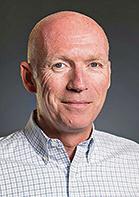
Steve Kramer
The Evolution of Performance-Based Design in Geotechnical Earthquake Engineering
Monday July 1st, 16:00 – 17:00
The paradigm of performance-based earthquake engineering (PBEE) has been developing over a period of some 30 years. While its initial development was in structural engineering, its concepts have been applied to problems of geotechnical earthquake engineering where they can offer particular benefits to engineers, owners, and the general public. This monograph reviews geotechnical seismic hazards, notions of seismic performance, historical approaches to geotechnical seismic design, and probabilistic methods for predicting geotechnical response. It then describes alternative approaches to performance-based design, distinguishing between what is often done in current practice and what could be done in future practice. It describes different levels of implementation and their relative advantages, and shows how the benefits of PBEE can be realized in a framework that most practitioners are already familiar with. The monograph is intended to introduce future leaders of geotechnical earthquake engineering and related fields to the history and basic concepts, principles, and opportunities afforded by performance-based design.
Steve L. Kramer is Professor Emeritus of Civil and Environmental Engineering at the University of Washington in Seattle. His primary research interests include soil liquefaction, site response analysis, seismic slope stability, and hazard analysis. He has worked on the coupling of probabilistic seismic hazard and response nalyses within performance-based earthquakeengineering frameworks, particularly with respect to soil liquefaction. Kramer is author of the textbook, Geotechnical Earthquake Engineering (Prentice-Hall). Kramer has been the recipient of the Presidential Young Investigator Award from the NSF, the Arthur Casagrande Professional Development Award from ASCE, a Walter Huber Research Prize from ASCE, and the ASCE Norman Medal (in 2009 and 2017). He received the 2016 M.J. Nigel Priestley Prize from the European Centre for Training and Research in Earthquake Engineering, the 2018 H. Bolton Seed Medal from ASCE, and the 2018 Nabor Carrillo Lecturer Award from the Mexican Society of Geotechnical Engineering. In 2020, he was named as a Distinguished Member of ASCE, a member of the U.C. Berkeley Academy of Distinguished Alumni and elected to the National Academy of Engineering. Most recently, he was named an Honorary Member of the International Association of Earthquake Engineering. Kramer is also a member of the faculty of the European School for Advanced Studies in the Reduction of Seismic Risk (the ROSE School) at the University of Pavia in Italy. Although recently retired from the University of Washington, he remains active in research and consulting, and in preparation of the second edition of his textbook, which will be published in mid-2024.
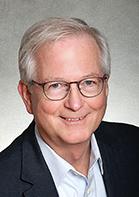
Jack P. Moehle
Performance-Based Earthquake Engineering: A Chronicle in Five Easy Pieces
Tuesday July 2nd, 16:00 – 17:00
Performance-based earthquake engineering is a powerful tool for earthquake engineering assessment and design. As an assessment tool, it aims to quantify performance using metrics that are useful for decision makers. As a design tool, it aims to achieve specified outcomes rather than adherence to particular technologies or prescribed means. The specified outcomes could be performance metrics useful to engineers (e.g., strain, rotation, damage) or other decision-makers (e.g., casualties, repair costs, functional recovery time), expressed as a function of risk over time, risk given a specified shaking intensity, or risk given a scenario earthquake. This monograph describes the development performance-based earthquake engineering of structures based on the personal experiences of the author. It begins with an origin in displacement-based design, and includes topics such as seismic evaluation and retrofitting of buildings, the development of probabilistic expressions of risk of loss, applications to new building designs, and the consideration of repair of earthquakeshaken buildings and repairability design.
Jack P. Moehle is a Professor of the Graduate School in the Department of Civil and Environmental Engineering at the University of California, Berkeley, where he has worked since 1980. He graduated with degrees in civil and structural engineering from the University of Illinois, Urbana-Champaign in 1980. He was the founding director of the Pacific Earthquake Engineering Research (PEER) Center, where he served from 1997-2008. He has played a leading role in the development of building codes and professional engineering guidelines for the design of new construction and the assessment and rehabilitation of seismically vulnerable existing construction, including Guidelines for Seismic Rehabilitation of Buildings (FEMA 273); Next-Generation Performance-Based Seismic Design Procedures (FEMA P-58); and Performance-Based Seismic Design of Tall Buildings (PEER). He has been a member of the ACI 318 Building Code Committee since 1989 and served as Chair from 2015-2019. He consults regularly on Engineering projects including high-rise buildings, existing vulnerable building construction, and civil infrastructure. He has authored or co-authored over 400 publications, including a book on Seismic Design of Reinforced Concrete Buildings (2014). His notable honors include election to the US National Academy of Engineering (2014), election as International Member of the Academy of Engineering of Mexico (2016), George W. Housner Medal (EERI, 2020), and Honorary Member of ACI, EERI, and SEAONC.

Li Li Xie
Ranking of Strong Earthquake Ground Motion Recordings Based on Degree of Damage to Structures Caused by Whole Time-History
Wednesday July 3rd, 16:00 – 17:00
While it was clear to engineers that the cause of structural damage during earthquake was due to the dynamic action of seismic ground motion on the structure, they were unable to determine what the earthquake ground motion it would be subjected to. It is unclear how much risk a structure designed according to the ground motion specified in the current design code will face in future earthquakes. The main reason for these difficulties is that the causes of structural damage are very complex. Different structures will have great differences in earthquake response under even the same ground motion due to their different periods, damping, nonlinear characteristics, and structural failure mechanisms. We have divided the existing structures into three categories according to their natural periods, divided the sites where structures are located on into four categories, and adopted different failure mechanism patterns for different structures. Finally, for each type of structure on the specific site, the tens of thousands of actual recorded ground motions have been ranked on probabilities base according to their potential risk to structures. The ranking of ground motion records would provide the designers a reasonable database for choosing the appropriate designed ground motions that it can easily estimate whether the level of risk of the designed structure will be acceptable or not.
Xie Li Li was born in 1939 and graduated from Tianjin University in 1960. He is currently the honorary director and professor of the Institute of Engineering Mechanics/China Earthquake Administration and the President of the China Earthquake Engineering Association. Professor Xie has been engaged in earthquake engineering research for more than 60 years. He has published more than 200 scientific and technical papers. Representative works include “Measurement and analysis of strong earthquake ground motion”, “The most unfavourable seismic design ground motion”, “Unified seismic design spectrum”, “Earthquake risk analysis system based on GIS and AI”, “The challenges to earthquake engineering in new Millennium”, etc. He is the main founder of the Chinese Strong Earthquake Motion Instrumentation Network. He played a leading role in developing the first performance-based seismic design code in China. Professor Xie was invited by the United Nations Secretary- General to serve as a member of the United Nations AD-Hoc Expert Group and a member of the Scientific and Technical Committee for the International Decade for Natural Disaster Reduction (IDNDR) for ten years. He served as the Director of the International Association of Earthquake Engineering (IAEE) 1988-1992, and IAEE’s Vice-President (2004-2008) and was elected as Honorary Director of IAEE (2008). He was the Chairman of the International Commission on Strong Motion Seismology of the International Association of Seismology and Physics of Earth’s Interior (IASPEI) for eight years. In 1992, he co-worked with Professor George Housner of the US, Professor Kobori of Japan, and Professor Casciati of Italy to establish the International Structural Control Association. He was elected as a founding member of the Chinese Academy of Engineering in 1994.
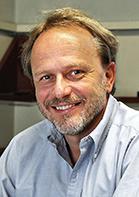
Gian Michele Calvi
The Art of Seismic Design
Thursday July 4th, 16:00 – 17:00
At the WCEE 2004 in Vancouver Tsuneo Katayama raised the importance of placing appropriate balance between science and experience, or science and art, in earthquake disaster mitigation. This vision inspired this monograph, in which the evolution of the approaches for seismic design is critically revisited. In the first part of the book seismic design is reviewed considering first its objectives and then discussing the dawn of structural dynamics, the lessons learned from some earthquakes of the XX century and the development from force – based to displacement – based design. Buildings, bridges and isolated structures are considered, in principle and as applications to simple examples, facilitating comparisons and conclusions. In the second part, seismic action is considered from an engineer’s point of view, summarizing and simplifying the process of probabilistic seismic hazard analysis (a mystery for most engineers) to obtain sound and effective representations of spectra for design and assessment. An approach for loss – based design is then presented, with the objective of minimizing seismic loss, including investments and progressive costs over time. In the appendix, the hand calculations for assessment, repair and strengthening of the Anatolian Viaduct, following the 1999 Düzce earthquake, are presented in detail, as an example of an ante litteram application of comprehensive design principles and capacity design to the real world.
Gian Michele Calvi is Professor at the IUSS Pavia, Director of Science of the Eucentre Foundation, Italy, and Executive vice-President of the IAEE. He graduated at the University of Pavia and received a Master of Science from the University of California, Berkeley, a PhD from the Politecnico di Milano and an Honorary Doctorate from the University of Cujo, Mendoza, Argentina. He has been the founder of the Eucentre Foundation and of the ROSE School (with M.J.N. Priestley). In 1996 he created the Journal of Earthquake Engineering (Taylor and Francis), with A.S. Elnashai and N.N. Ambraseys, where he still serves as associate editor. He is author of hundreds of publications and of a few books, including: Seismic design and retrofit of bridges (with M.J.N. Priestley and F. Seible, 1996), Displacement-Based Seismic Design of Structures (with M.J.N. Priestley and M.J. Kowalsky, 2007), Seismicdesignandanalysisoftanks (withR. Nascimbene, 2023). In the occasion of the WCEE 2024 he has published a “Master Series” monograph, The art of seismic design, by invitation of the IAEE President and Past President. He has been invited keynote speakers in tens of conferences, including two World and four European Conferences on Earthquake Engineering. He has been designer, consultant or checker for hundreds of structural projects, including: the Rion-Antirion cable stayed bridge (1999-2004, 2883 m, in Greece); the Anatolian Viaduct (2000-2003, 119 spans, in Turkey); the new housing system after L’Aquila earthquake (2009-2010, with 185 buildings seismically isolated with more than 7,000 devices, completed in about six months); the construction of 103 schools in Costa Rica (2013-2018, for the IAD bank); the assessment and strengthening program in the area of Groningen, in The Netherlands (2013-2024, due to problems of induced seismicity). He has been always active in conceptual innovation in seismic design, focusing on masonry in his early days, on bridges, displacement-based design and seismic isolation from the nineties.
EERI/SSA annual Lectures
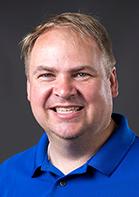
Michael Olsen
Geospatial Technology – Saving the World’s Past, Present and Future from Natural Hazards
Tuesday July 2nd, 17:00 – 18:00
The task of maintaining resilient infrastructure against the onslaught of natural hazards often feels elusive and unattainable. Recent advances in technology offer promising solutions and opportunities towards this goal; however, the effective adoption and utilization of those technologies operates at a much slower pace given the societal realities of budget limitations, workforce shortages, polarization of priorities, disillusionment from past failures, and resistance to change. In day to day operations, efforts by engineers, planners, and decision makers often are stymied due to a lack of accessible, trustworthy, and current information related to infrastructure conditions. These problems are exacerbated in emergency situations where infrastructure systems and people are pushed to extreme limits.
At the project scale, inadequate site investigations result in substantial delays and cost-overruns from unanticipated problems during construction as well as poor infrastructure performance due to ground failure during a seismic event. These challenges propagate to the network scale where entities managing lifelines are often forced to make decisions prioritizing mitigation efforts based on limited, simplistic, or outdated information, which significantly hampers response and recovery efforts during a disastrous situation. This presentation explores examples of how expanded and effective usage of geospatial technologies now can help us proactively “save” the world through detailed mapping of our critical lifeline infrastructure to improve 1) monitoring, modeling, and analysis efforts to more precisely identify vulnerable infrastructure, 2) planning for and understanding the potential impacts and damage extents associated with multiple hazards, 3) the conduct of post-disaster reconnaissance, damage assessments, and rebuilding efforts, and 4) digital preservation of infrastructure and other resources with significant cultural and historical importance that are unlikely to withstand major seismic forces lurking on the horizon. Ultimately, geospatial technology serves as the unifying glue to enable meaningful collaboration between science, engineering, and public policy necessary for a resilient society capable of effectively responding and adapting to natural hazards.
Michael Olsen is the CH2M Hill Professor of Geomatics in the School of Civil and Construction Engineering at Oregon State University. He obtained BS and MS degrees in Civil Engineering from the University of Utah and a Ph.D. in Structural Engineering from the University of California, San Diego. His research focuses on the collaborative application of geospatial technologies to natural hazards as well as infrastructure monitoring and management. He has participated on several post-earthquake reconnaissance teams to collect detailed 3D point cloud data to document damages. He has studied the impact of rockfalls on dwellings during the 2011 Christchurch earthquake, landslides triggered by the 2016 Kaikoura earthquake, and liquefaction-induced damage at CentrePort, Wellington, New Zealand. He was also part of a team that developed seismically-induced landslide hazard mapping of Western Oregon.
Michael Olsen serves as the Technical Director for the NSF Natural Hazards Engineering Research Infrastructure (NHERI) RAPID Facility, the Director of the Cascadia Lifelines Program (CLiP), a member of the Partnership and Applications committee of the Cascadia Region Earthquake Science Center (CRESCENT), an Associate Editor of the ASCE Journal of Surveying Engineering, the Past-President of the Surveying and Geomatics Educators Society (SaGES), and a co-founder and CEO of a tech transfer spinout company, EZDataMD, LLC.
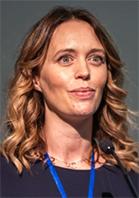
Helen Crowley
Why Seismic Hazard Modelling Has Become a Risky Business
Thursday July 4th, 17:00 – 18:00
The Joyner Lecture honours the distinguished career of William B. Joyner at the U.S. Geological Survey and his abiding commitment to continuing communication and education at the interface between research findings of earthquake science and the practical realities of earthquake engineering.
One such interface that has been the source of much debate in recent years relates to the use of probabilistic seismic hazard assessment (PSHA) models as the basis for seismic design and assessment. Since the publication of the landmark paper by Cornell in 1968, PSHA has become the standard approach for defining the seismic actions in design codes. Before then, following the Messina (Italy) earthquake in 1908, seismic zonation maps based on observed macroseismic intensity from past earthquakes were used to define where, and to what level, buildings should be designed to withstand the lateral forces from earthquakes. These zonation maps were often, and somewhat inevitably, updated after damaging earthquakes.
Despite the clear improvements that the use of a PSHA-based approach brought, criticism was frequently placed on the outputs of these models, such as when the ground motions from earthquakes were seen to exceed those underlying the design code, suggesting a widespread misunderstanding of the meaning of the latter. Since the 2000’s, there has been a move towards explicitly discussing the levels of risk that are being accepted by the code, together with the consequences expected under the design levels. This has led, in the United States, to the adoption of the so-called risk-targeted approach for defining the seismic actions, which aims at harmonising the probability of collapse of buildings across the region of interest. This methodology has not yet been widely adopted by design regulations in other parts of the world, though in Italy, for instance, a significant effort has been made to evaluate the underlying spatial variation of risk to buildings designed to the latest standards. Whilst a more explicit recognition of the level of risk associated with seismic design codes has been an important step forward in Italy, the latest update to the PSHA model, developed in 2019 by the Italian Geological Survey (INGV), has continued to receive criticism and has even been rejected as the basis for an update of seismic actions in the design code. In this lecture, the argument will be made that the onus should now be on structural engineers to demonstrate the impact of these changes in terms of the levels of risk to the building stock, and how resilience has been, and can continue to be, built into the code to accommodate such changes resulting from advances in earthquake science.
Helen Crowley is the current Secretary-General of the Global Earthquake Model (GEM) Foundation. She holds an M.Eng. in Civil Engineering from Imperial College London and M.Sc. and Ph.D. degrees in Earthquake Engineering from the University of Pavia (ROSE School). She has collaborated closely with both the engineering seismology and earthquake engineering communities in Europe, as a member of the European Plate Observing System (EPOS) Seismology Consortium, and the coordinator of the development of the first, open European Seismic Risk Model (ESRM20), and won the 2009 European Geosciences Union Plinius Medal for her contributions to the field. Her research has touched on many topics related to seismic risk mitigation, from the definition of seismic actions for earthquake loss models and seismic design codes, to the development of regional exposure and vulnerability models for the built environment. She has nearly 200 publications, including more than 70 papers in international peer-reviewed publications, covering many aspects of earthquake engineering with a common thread of earthquake risk estimation.
Helen Crowley is currently Editor of Earthquake Spectra, where she previously served as an Associate Editor. She is also the recipient of the 2012 Shah Family Innovation Prize.
